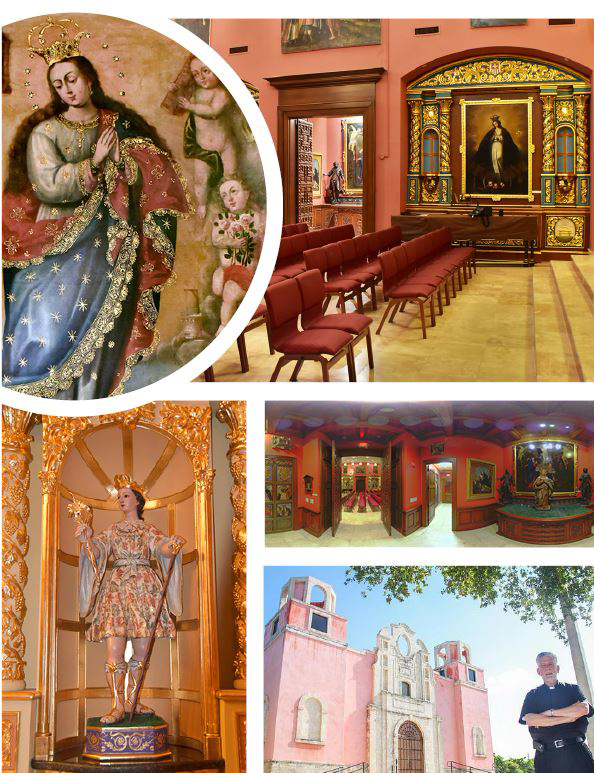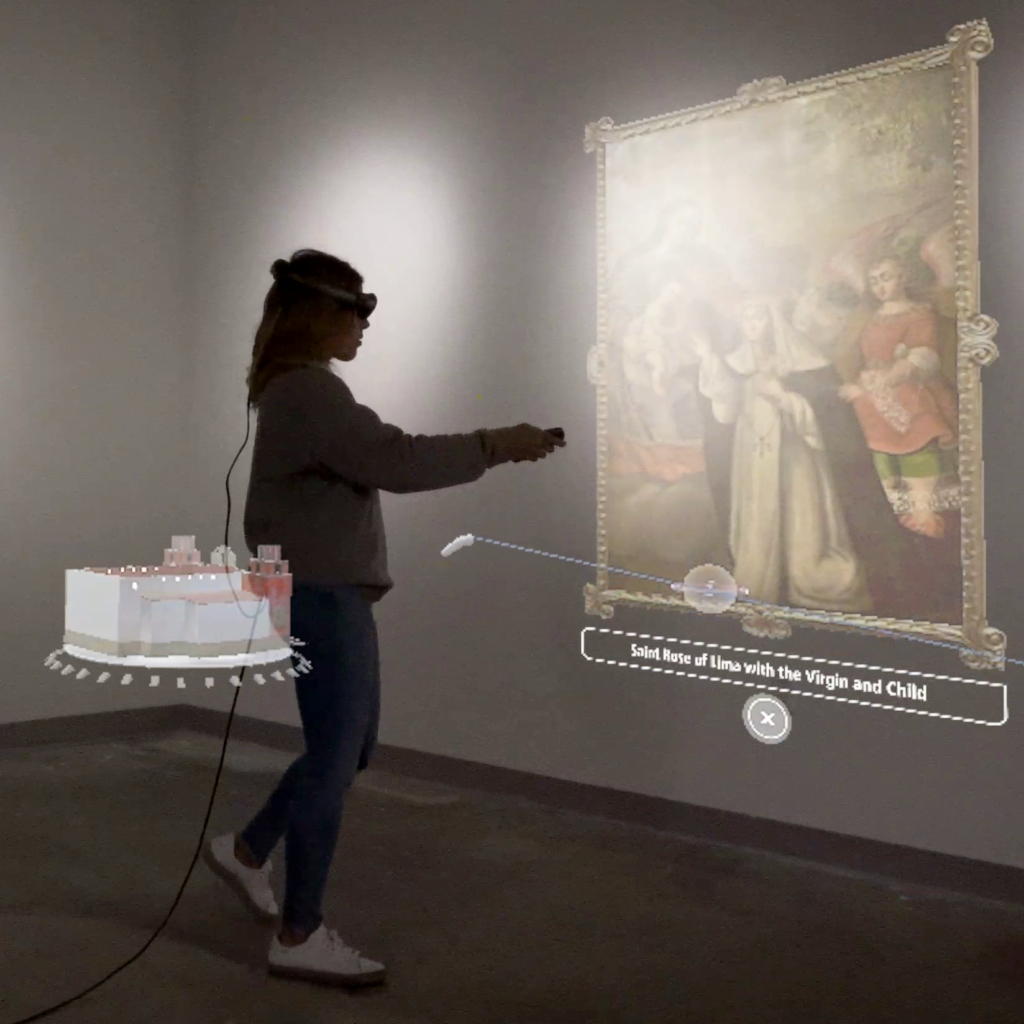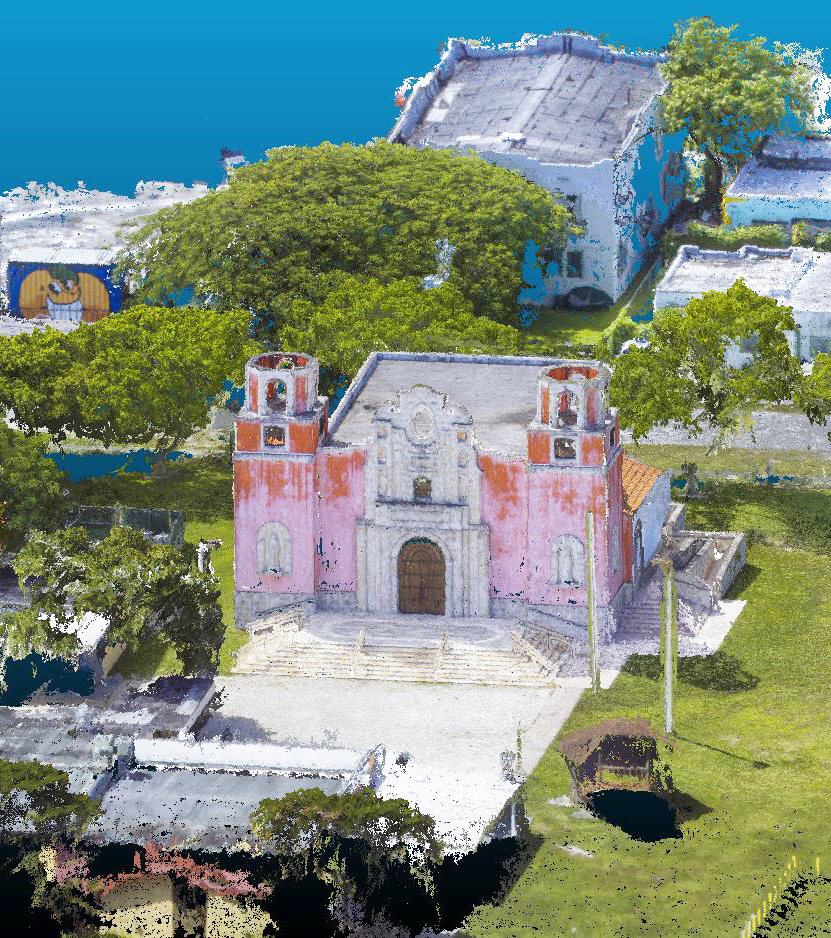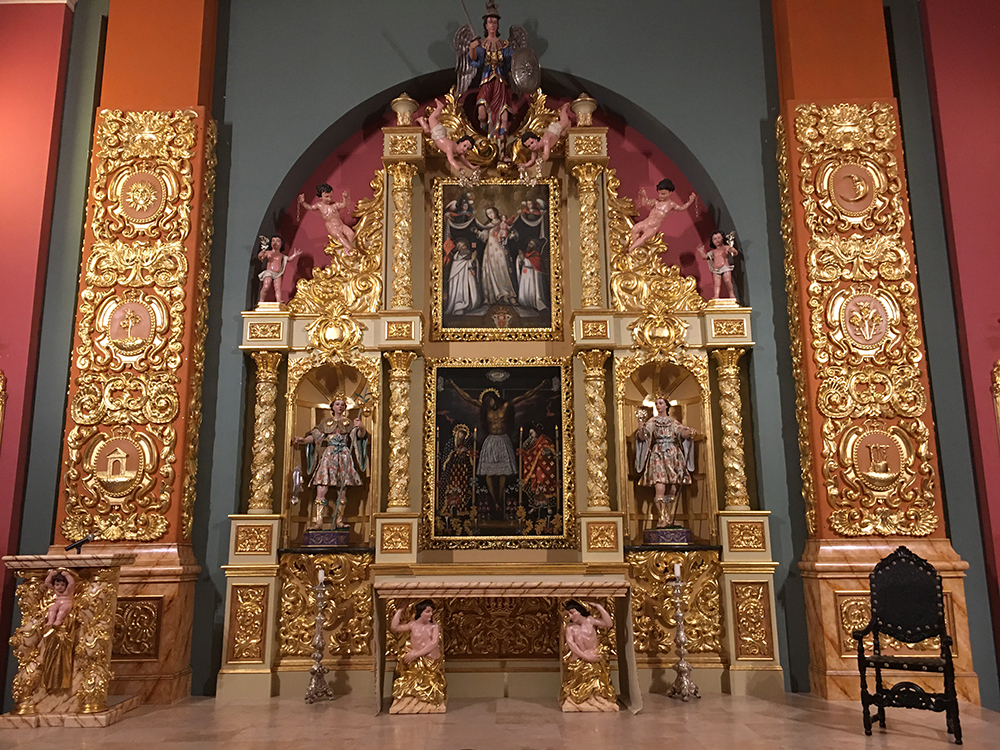 University of Miami art history students have access to an augmented reality (AR) application to explore Colonial Spanish paintings and architecture, thanks to a collaboration between IDSC and the College of Arts and Sciences.
University of Miami art history students have access to an augmented reality (AR) application to explore Colonial Spanish paintings and architecture, thanks to a collaboration between IDSC and the College of Arts and Sciences.
Building on the University’s partnership with Magic Leap, this advanced AR application opens the door to virtual studies of the large collection of Colonial art at Nuestra Señora de la Merced Chapel at Corpus Christi Catholic Church in Miami.
“The La Merced Chapel is home to an extraordinary collection of donated art, and I have taken prior classes there to study the paintings,” said Karen R. Mathews, Associate Professor of Art and Art History. “Through the Provost’s initiative and funding from the College of Arts and Sciences, this leading-edge research project allows us to bring the Chapel to students on campus, as well as audiences around the world—an important consideration in the time of COVID, when so much learning is done virtually.”
Located in Allapattah, a neighborhood to the NW of downtown Miami, the Chapel reflects the dream of Corpus Christi’s long-time pastor, Father José Luis Menéndez, to recreate the spirit of an old Peruvian church. Construction began in 2005 on La Merced Chapel, which houses an expanding collection of 200-plus works from throughout South and Central America, and the Caribbean.


 UM Art students and IDSC professionals began collaborating in 2019, and the AR application was completed during the spring 2020 semester, despite the disruptions related to COVID-19. “We used drones and LiDAR laser scanning technology to map the Chapel’s interior and exterior, while collecting high-resolution photos of the paintings,” said Chris Mader, IDSC Director of Software Engineering. “Next, we used Magic Leap’s platform, along with the gaming engine Unity, to create a detailed interactive experience.”
UM Art students and IDSC professionals began collaborating in 2019, and the AR application was completed during the spring 2020 semester, despite the disruptions related to COVID-19. “We used drones and LiDAR laser scanning technology to map the Chapel’s interior and exterior, while collecting high-resolution photos of the paintings,” said Chris Mader, IDSC Director of Software Engineering. “Next, we used Magic Leap’s platform, along with the gaming engine Unity, to create a detailed interactive experience.”
Mathews added that the AR application creates an immersive experience with detailed information on five of the Chapel’s paintings, as well as its architecture. “By clicking on points of interest, you can open an audio and a text block—an ideal approach for students and adults with different learning abilities,” she said.
Unlike a virtual reality (VR) experience, the AR app allows the students to control their interactions with the Chapel and its artwork. “You can walk around a model of the exterior of the Chapel, and zoom in to see the interior and the paintings. You can select a painting, take it out of the Chapel, and place it on a wall in the real-world room you’re currently in to see it life size, or bring out another painting for comparison. There is so much educational potential in this application, which offers a different way to appreciate great art.”

 exterior point cloud captured using LiDAR
exterior point cloud captured using LiDAR
Mader said the project demonstrates IDSC’s ability to produce an end-to-end interactive digital experience. “We have been creating three-dimensional maps, models, and reconstructions models for a variety of purposes,” he added. “We are also developing a course for the School of Communications that uses 3D for storytelling.”
“We come to IDSC with ideas,
and they say, ‘Let’s go!'”
 The art history AR application is just the latest collaboration between Mathews and the IDSC team. The IDSC Software Engineering team includes Amin Sarafraz, PhD, a Research Assistant Professor of Civil, Architectural, and Environmental Engineering whose research interests include Machine Learning, Photogrammetry, and Computer Vision. “We have worked together for more than four years, on a variety of projects relating to the Digital Humanities,” Mathews said. “For example, they created a new algorithm to remove distortion from aerial drone photos and obtain crisp, clean outlines of architectural structures. The knowledge and experience of IDSC’s data and computing professionals has been fundamental to our success. We come to IDSC with ideas, and they say, ‘Let’s go!'”
The art history AR application is just the latest collaboration between Mathews and the IDSC team. The IDSC Software Engineering team includes Amin Sarafraz, PhD, a Research Assistant Professor of Civil, Architectural, and Environmental Engineering whose research interests include Machine Learning, Photogrammetry, and Computer Vision. “We have worked together for more than four years, on a variety of projects relating to the Digital Humanities,” Mathews said. “For example, they created a new algorithm to remove distortion from aerial drone photos and obtain crisp, clean outlines of architectural structures. The knowledge and experience of IDSC’s data and computing professionals has been fundamental to our success. We come to IDSC with ideas, and they say, ‘Let’s go!'”

RETABLO
The retablo at Nuestra Señora de la Merced Chapel is created in the Andean baroque style,
where the local flora and fauna of Peru are accompanied by Christian iconographic elements.
Retablos were developed to aid those who could not read the Bible, nor understand the Latin mass.
Nuestra Señora de la Merced Chapel
Augmented Reality Tour
Art Historical Content Created By
Spring 2020 ARH 2700 Students
TOOLS
Magic Leap 1 Creator Edition
Unity 2019.2
Maya 2020.1
Blender 2.8
Adobe Illustrator
Adobe Photoshop
Leica RTC 360 Laser Scanner
Nikon DSLR Camera
SenseFly Albris Drone
Tags: Advanced AR, Allapattah, Amin Sarafraz, Art and Art History, Augmented Reality, Chris Mader, College of Arts and Sciences, Corpus Christi Catholic Church, Karen Mathews, La Nuestra Senora de la Merced Chapel, LiDAR, Magic Leap, point cloud, Spanish Colonial Architecture



